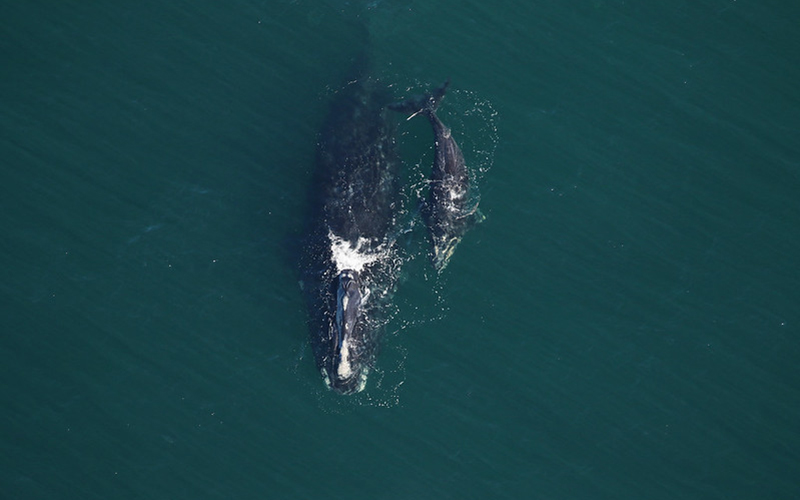
A right whale mom and calf. Photo: Clearwater Marine Aquarium Research Institute. NOAA permit 20556-01
February 13, 2024 (BOSTON, MA) — Conservation Law Foundation (CLF) and partner organizations have asked a federal court to allow a paused lawsuit to proceed. Filed in 2021, the case challenges the federal government’s unreasonable delay in acting to protect these critically endangered whales. The groups are seeking a deadline for final action on a proposed rule expanding protections for North Atlantic right whales from deadly vessel strikes.
“The saddest aspect of the last several years is the avoidable deaths of calves that didn’t even make it to their first birthday,” said Erica Fuller, senior counsel at Conservation Law Foundation. “Good intentions will not save right whales; a strong vessel speed rule will save right whales. The government needs to act with the urgency that the situation demands.”
Only around 360 North Atlantic right whales survive today. Mother-calf pairs spend a great deal of time at or near the water’s surface in calving grounds, making them particularly vulnerable to vessel strikes. For the past two years, the Biden administration has denied petitions by conservation groups calling for an emergency rule expanding protections for mothers and calves in the calving grounds.
A 2008 vessel speed rule is the only protection right whales currently have from vessel strikes in U.S. waters. The rule applies only to vessels 65 feet and longer, requiring a speed limit of 10 nautical miles per hour in times and places right whales were considered most at risk in 2008. Since then, due to changing climate, right whales have shifted their habitat and new data shows that vessels between 35 and 65 feet long have struck and killed right whales.
In 2012 and 2020, the conservation groups petitioned the federal government to expand the 2008 rule. When the government failed to respond to those petitions, the groups filed suit in 2021. NOAA Fisheries published a proposal to expand the 2008 regulation in August 2022, but the rule has yet to be finalized.
In August 2022, conservation groups reached an agreement with the federal government to put the case on hold after NOAA Fisheries released its proposed rule. This new action by conservation groups was prompted by the ongoing delay in finalizing the rulemaking, coupled with the recent vessel strike on the calf in the southeastern calving grounds, which NOAA Fisheries found was likely caused by a vessel between 35 and 57 feet long.
If finalized, the proposed speed rule would apply to vessels 35 feet and longer and would update seasonal speed zones to match right whale distribution. It would also require vessels to comply with temporary dynamic speed zones triggered by visual or acoustic right whale detections.
CLF experts are available for further comment.
###

